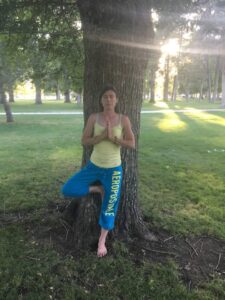
The Origin of Yoga and Its Profound Influence on Holistic Healing
Yoga, an ancient practice that seamlessly blends the body, mind, and spirit, has become a cornerstone of holistic healing in modern times. While it’s celebrated globally for its transformative effects, its roots and historical significance provide a deeper understanding of why it remains such a powerful tool for personal well-being.
The Origin of Yoga: A Spiritual Legacy
Yoga traces its origins back over 5,000 years to the Indus-Sarasvati civilization in Northern India. The word “yoga” is derived from the Sanskrit root yuj, meaning “to join” or “to unite,” symbolizing the union of individual consciousness with universal consciousness. Early references to yoga can be found in the Rigveda, one of the oldest known texts, which includes hymns and rituals aimed at achieving harmony with the divine.
The system of yoga was refined and developed by sages and philosophers, with one of the most influential texts being the Yoga Sutras by Patanjali, written around 200 BCE. Patanjali outlined the eight limbs of yoga, which include ethical guidelines, physical postures (asanas), breath control (pranayama), and meditation, emphasizing the practice as a pathway to spiritual enlightenment.
Yoga’s Evolution into Holistic Healing
Though originally rooted in spiritual development, yoga’s emphasis on balance and harmony naturally aligns with the principles of holistic healing. Holistic healing views the individual as an interconnected system of body, mind, and spirit, addressing all aspects of a person rather than isolated symptoms.
The practice of yoga has contributed to holistic healing in several profound ways:
- Physical Health: Yoga’s postures enhance flexibility, strength, and circulation while aiding in the prevention and management of chronic conditions such as arthritis, high blood pressure, and back pain.
- Mental Clarity: The meditative aspects of yoga calm the mind, reduce stress, and promote mental clarity. By encouraging mindfulness, yoga helps individuals process emotions and develop resilience.
- Energy Balance: Ancient yogis understood the body as an energetic system. Practices like pranayama regulate the life force energy (prana), supporting vitality and emotional well-being.
- Spiritual Growth: Yoga’s focus on self-awareness and inner peace nurtures spiritual growth, fostering a deeper connection to one’s purpose and the universe.
Yoga in Modern Holistic Healing Practices
Today, yoga is a fundamental component of many holistic wellness programs. At PhillipsRetreat, yoga is integrated with other practices such as Reiki, crystal healing, and sound therapy to support clients on their journey toward inner and outer well-being. By combining movement with mindfulness and intention, yoga becomes more than just exercise—it becomes a gateway to self-discovery and transformation.
In my personal journey, yoga has been instrumental in recovering balance, particularly after my life-altering stroke at 35. It taught me to honor my body’s needs, quiet my mind, and listen to the wisdom within. This experience is why yoga holds a special place in the offerings at PhillipsRetreat, helping others rediscover their own healing potential.
Conclusion: A Timeless Practice for Modern Healing
Yoga’s enduring legacy as a holistic practice speaks to its unparalleled ability to foster harmony within ourselves and with the world around us. Whether you’re seeking physical health, emotional balance, or spiritual growth, yoga offers a path that is as transformative today as it was thousands of years ago.
If you’re ready to explore yoga’s healing potential, join us at PhillipsRetreat for a personalized session. Let yoga be the bridge to your holistic well-being—one breath, one pose, one moment at a time.